 Last week I promised to tell you why it’s good to keep your garden standing through the winter, but I’m no expert so I turned to Marcy Cunkelman for advice.
Last week I promised to tell you why it’s good to keep your garden standing through the winter, but I’m no expert so I turned to Marcy Cunkelman for advice.
Here are some general principles, then her entire response below.
Why not clear your garden in the fall? Here are some quick reasons:
- The seeds provide winter food for birds and animals.
- The brush provides shelter.
- If you leave the old plants standing you don’t have to mulch.
- Insects overwinter on the plants in egg masses, cocoons and galls. Birds eat them.
- You will learn a lot by watching the birds find food among the plants.
Here’s Marcy’s complete answer:
Most people like to clear everything in the fall because it “looks good” all cleared up. I don’t mulch my plants for the winter. I leave my garden standing and it protects the plants.
I will cut back some things if they break and the wind starts moving them from one place to the other. Grasses are a good example of this, especially the heavy leaves. After seed heads are eaten I don’t mind cutting them back BUT you need to look hard for praying mantis egg cases, chrysalises and cocoons. This is how most insects overwinter.
If I had a problem plant with scale or aphids, I cut it back and get rid of the problem stems (do NOT put in the compost).
I am always amazed to see how birds use the plants. I wouldn’t have noticed this if I took down the goldenrod galls or missed that praying mantis egg case, I wouldn’t have seen the downy woodpecker or chickadees getting the little treasures inside.
If you do have to clear, then at least save the seed heads and keep them some place where the birds will be able to eat them through the winter. Maybe some will seed and root and you’ll have a little “wild area” the birds and other critters will enjoy. I have been taking seed heads and sprinkling them in areas around the yard, edges of the woods and my “meadow” so there will be a variety of plants for the birds and butterflies.
Something else I like to do, when I make jellies I save the leftover pulp and freeze and thaw it out and put it out for the birds in winter. The fruit loving birds will eat it and it doesn’t go to waste. I usually do this if I have a mockingbird, robins or bluebirds in the winter. Most years the flocks of robins begin to return to the yard in late February or early March.
When I start to see the “noses” of the daffodils pushing up in the spring it’s time for me to start cleaning the beds, usually around the pond areas first since that is the most visible from the house. I love to see the progression from nothing to at least 5 changes of season in the plants, birds, butterflies and other critters. — Marcy Cunkleman
(photo by Chuck Tague)
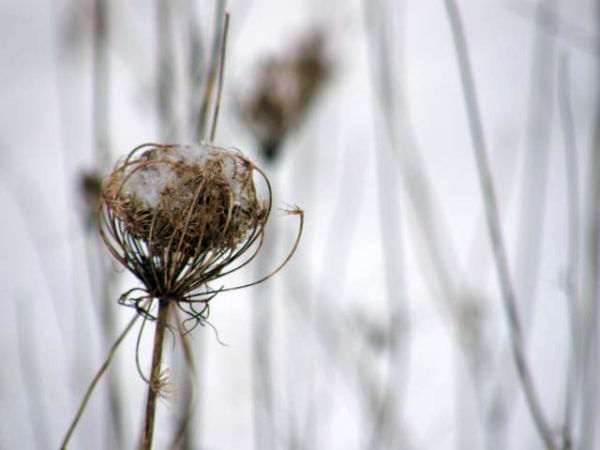
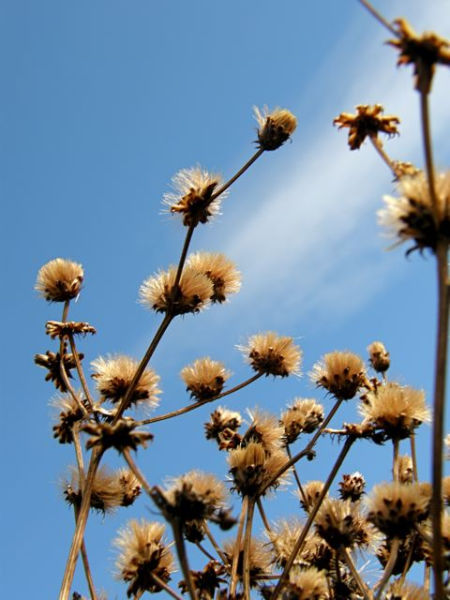

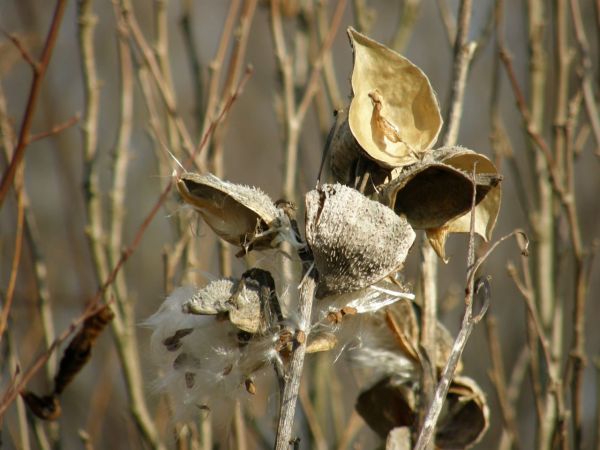
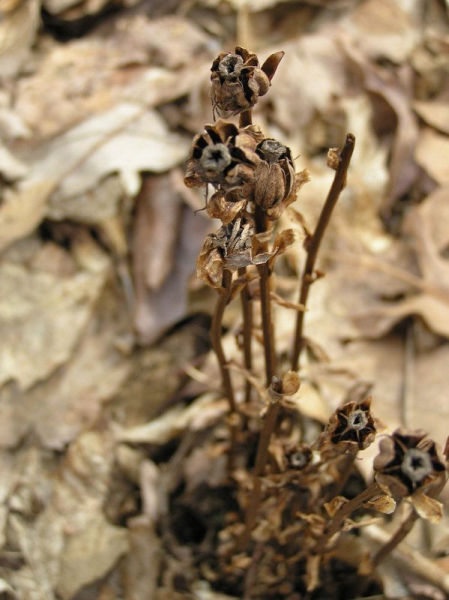
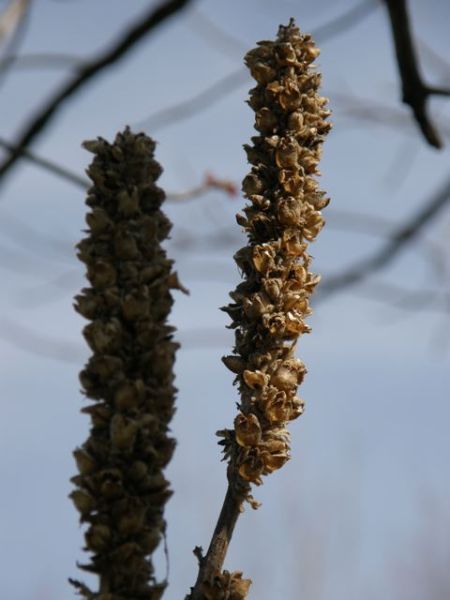
 Last week I promised to tell you why it’s good to keep your garden standing through the winter, but I’m no expert so I turned to Marcy Cunkelman for advice.
Last week I promised to tell you why it’s good to keep your garden standing through the winter, but I’m no expert so I turned to Marcy Cunkelman for advice.